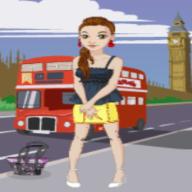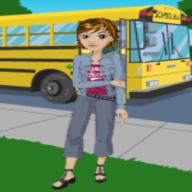when to add a "s" at the end of word
2007-01-22 9:47 pm
pls give some example...THX
回答 (3)
2007-02-01 9:28 pm
✔ 最佳答案
Well, allow me to clarify.Firstly, if the object you are describing is plural (more the one), then you will have to add a ' s ' at the end of the word.
boy boys
girl girls
cat cats
chair chairs
Where a noun ends in a sibilant sound, the plural is formed by adding [ɪz] (also pronounced [əz]), which is spelled -es if the word does not already end with -e:
dish dishes
glass glasses
judge judges
phase phases
witch witches
Morphophonetically, these rules are sufficient to describe most English plurals. However, there are several complications introduced in spelling.
The -oes rule: most nouns ending in o preceded by a consonant also form their plurals by adding -es (pronounced [z]):
hero heroes
potato potatoes
volcano volcanoes
The -ies rule: nouns ending in a y preceded by a consonant drop the y and add -ies (pronounced [iz]):
cherry cherries
lady ladies
Note, however, that proper nouns (particularly those for people or places) ending in a y preceded by a consonant form their plurals regularly:
Germany Germanys (as in The two Germanys were unified in 1990)
Harry Harrys (as in There are three Harrys in our office)
This does not apply to words that are merely capitalized common nouns:
P&O Ferries (from ferry)
Words ending in a y preceded by a vowel form their plurals regularly:
day days
monkey monkeys
2007-02-01 13:32:48 補充:
Moreover, the second scenario involves both personal pronouns and tenses.If the personal pronouns is singular(he, she, it), provided that the sentence is in present tense, you will need to add a ' s ' at the end of the verb.
2007-02-01 13:33:33 補充:
He likes you.He(singular) likes (verb, present tense, therefore added a ' s ') you.Hope it helps
2007-02-01 13:34:22 補充:
Reference:Me and wiki
2007-01-26 3:47 am
1. When it is describing a plural, then we add "s" at the end of the word (usually a noun)
Example: book ( one only)
books ( 2 or more)
But sometimes we will add "es" , because it ends with a, e, i, o , u (mostly)
Example: tomato ( one only)
tomatoes ( 2 or more)
We also add"ies" when the word ends with "y"
Example: strawberry( one only)
strawberries ( 2 or more)
2. when we are using present tense (he, she it)
Example: I go to work every day. ( we wont add "s" after the verb when the subject is I, you, we, they)
He goes to work every day.
Hope that would help you~~
Example: book ( one only)
books ( 2 or more)
But sometimes we will add "es" , because it ends with a, e, i, o , u (mostly)
Example: tomato ( one only)
tomatoes ( 2 or more)
We also add"ies" when the word ends with "y"
Example: strawberry( one only)
strawberries ( 2 or more)
2. when we are using present tense (he, she it)
Example: I go to work every day. ( we wont add "s" after the verb when the subject is I, you, we, they)
He goes to work every day.
Hope that would help you~~
2007-01-22 9:53 pm
plural
There are many apple(s)
after he, she & it
Mary eats an apple.
There are many apple(s)
after he, she & it
Mary eats an apple.
收錄日期: 2021-04-13 15:29:26
原文連結 [永久失效]:
https://hk.answers.yahoo.com/question/index?qid=20070122000051KK01286


